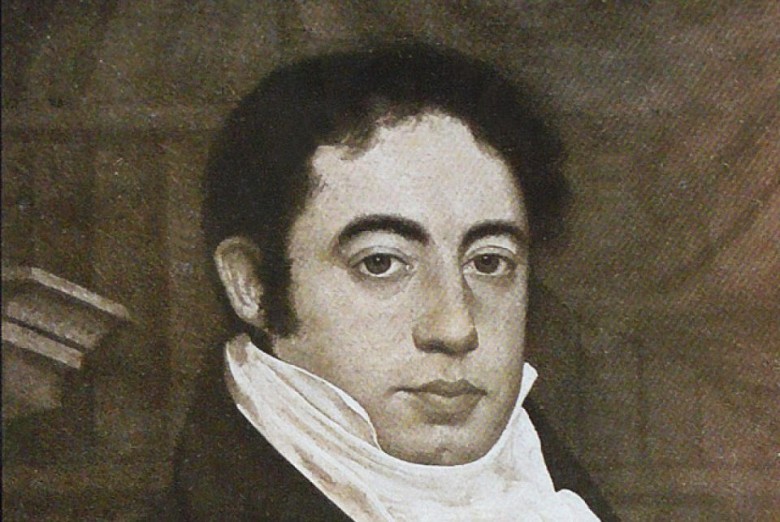
The Tale of the Rookie Emperor "Fogo Foguinho" and the All-In Gambler Without the Best Cards

Introduction
In the annals of South American history, the year 1825 stands out not just for the fervor of independence movements but also for the chaotic inter-nation conflicts that ensued. As the fight for autonomy ignited passions in the hearts of colonial subjects, it was also the time when rivalries among emerging nation-states began to take shape. The land known today as Uruguay lay in the crosshairs of these historical forces, at the intersection of great aspirations and profound struggles. Within this context, two pivotal figures emerged: Bernardino Rivadavia of Argentina and Don Pedro I of Brazil, cloaked in their ambitions but chased by scandal and war. Their intertwined destinies played a significant role in the tumultuous birth of what would eventually become the nation of Uruguay.
The Prelude: A New Era of Independence
To understand the significance of 1825, we must first look at the development of independence movements throughout South America. The early 19th century was characterized by a growing discontent with colonial rule, stemming from Enlightenment ideas and a desire for self-governance. Many Latin American nations began to break free from Spanish and Portuguese colonial rule, inspired by successful revolutions in North America and France.
In the Río de la Plata region, which encompassed modern-day Argentina and Uruguay, the struggle took on a unique form. The Banda Oriental, present-day Uruguay, found itself in a precarious position, as it served as a cultural and economic gateway between the larger nations of Argentina and Brazil. The political landscape was fracturing, and the question of national identity was more pressing than ever.
Bernardino Rivadavia: The Visionary Reformer
Among the prominent figures emerging from this era was Bernardino Rivadavia, who became Argentina's first president in 1826. Rivadavia was a man of ideas—a reformer who sought to modernize the fledgling republic by implementing a series of ambitious initiatives. His vision included the establishment of public education, the promotion of free enterprise, and the strengthening of military capabilities. However, Rivadavia’s strong centralism soon attracted criticism from provincial leaders, and his political dreams began to unravel.
His paramount challenge came from neighboring Banda Oriental, where discontent was brewing. The Easterners (as people from this region were called) craved autonomy and saw in Rivadavia a potential oppressor. Rivadavia's insistence on central governance alarmed many, catalyzing a sense of nationalism that would spur revolts against his authority. Despite his progressive aspirations, his political machinations would ultimately wield repercussions for both Argentina and the Eastern territories.
Don Pedro I: The Rookie Emperor
In stark contrast to Rivadavia, Don Pedro I of Brazil emerged as a wild card in the mix. He proclaimed himself the Emperor of Brazil in 1822 after Brazilian independence from Portugal, and his rule was marked by dramatic decisions. Known for his charisma and imperial aspirations, he was often labeled "Fogo Foguinho" (Little Fire) because of his fiery demeanor and his penchant for passionate speeches. His personal life was equally flamboyant—marked by a series of scandals, including numerous affairs that captured the imagination of both allies and opponents.
As tensions escalated in the Southern cone of South America, Don Pedro I's ambitions intersected with the fate of Banda Oriental. Fogo Foguinho saw the territory as a strategic asset that could further his own imperial expansion vis-à-vis Rivadavia's Argentina. But unlike Rivadavia, who sought centralized reform, Don Pedro embraced a more militaristic approach. He made clear his determination to strengthen Brazil’s position by intervening in the affairs of neighboring territories, including the Eastern Republic.
The Conflation of Interests: The First War of Independence
As nationalist sentiments soared among Easterners, they rallied around figures like Juan Antonio Lavalleja and Manuel Oribe, both of whom aimed to liberate Banda Oriental from external control—whether from Spain or the perceived tyranny of Buenos Aires. The call for independence echoed louder by the day.
Amidst this backdrop, the year 1825 saw the "Treinta y Tres Orientales," or the Thirty-Three Easterners, launch a pivotal revolution against Brazilian dominance. These individuals, among whom were Lavalleja and Rivera, believed they could forge a new national identity for what they considered their homeland. Their motivations were not purely patriotic; however, many saw their involvement as a chance to assert their power and influence among the growing crowd yearning for self-governance.
Don Pedro I viewed the insurrection with trepidation, knowing that any significant loss to a rebellion could undermine his own authority. Rivadavia saw the conflict as an opportunity to exploit the situation, dreaming of a unified region that would boost Argentina's standing. What followed was a chaotic melee of battles, allegiances, and shifting loyalties that fundamentally altered the political landscape of the region.
Scandals and Political Intrigues
The conflict was underscored by a series of scandals that would rock both Rivadavia's administration and Don Pedro's court. Rivadavia’s governmental reforms were undermined by accusations of corruption, fueling dissent amongst provincial leaders, while Don Pedro faced personal scandals that threatened to destabilize his imperial rule. Both leaders were at a disadvantage—each faced internal pressures that may have clouded their judgment as they navigated the hostilities.
Among numerous incidents, rumors swirled about Rivadavia's financial dealings and alliances with foreign powers, which he used to bolster his resources for war. Concurrently, Don Pedro's strategic errors in dispatching military units to quell the rebellion highlighted a lack of coherent planning. Each leader went "all in," wagering their political futures on outcomes that seemed increasingly uncertain.
The Aftermath: A New Nation
The culmination of these events led to the 1828 Treaty of Montevideo, a turning point. The treaty sanctioned the establishment of the Eastern Republic, formally recognizing its independence from both Brazil and Argentina. What emerged from the political ructions was a complex tapestry of alliances and enmities. Neither Rivadavia nor Don Pedro could claim unadulterated victory. Instead, both experienced the consequences of their shortcomings.
Rivadavia fell out of favor, forced to resign under mounting pressure, while Don Pedro’s reputation in Brazil gradually waned. The Eastern Republic now stood as its own entity, poised to carve out a distinctive national identity.
Conclusion
The saga growing from the rivalries between Bernardino Rivadavia and Don Pedro I reflects a critical period of transformation within South America. With their visions colliding on foreign soil, the consequences of their ambitions gave birth to the nation of Uruguay, representing a crossroads of dreams, battles, scandals, and ultimately, autonomy. The bold efforts of the Thirty-Three Easterners, championed by Lavalleja and Rivera, were not simply acts of rebellion but profound assertions of identity. The year 1825 was not merely a year marked by tumult but one that laid the foundation for a new, independent nation that would aspire to align its fate away from the shadows of its historical adversaries. The legacies of Rivadavia and Don Pedro, intertwined as they were, continue to resonate in the region’s historical narrative, signifying the birth pangs of national consciousness.




















Comments
0 comment